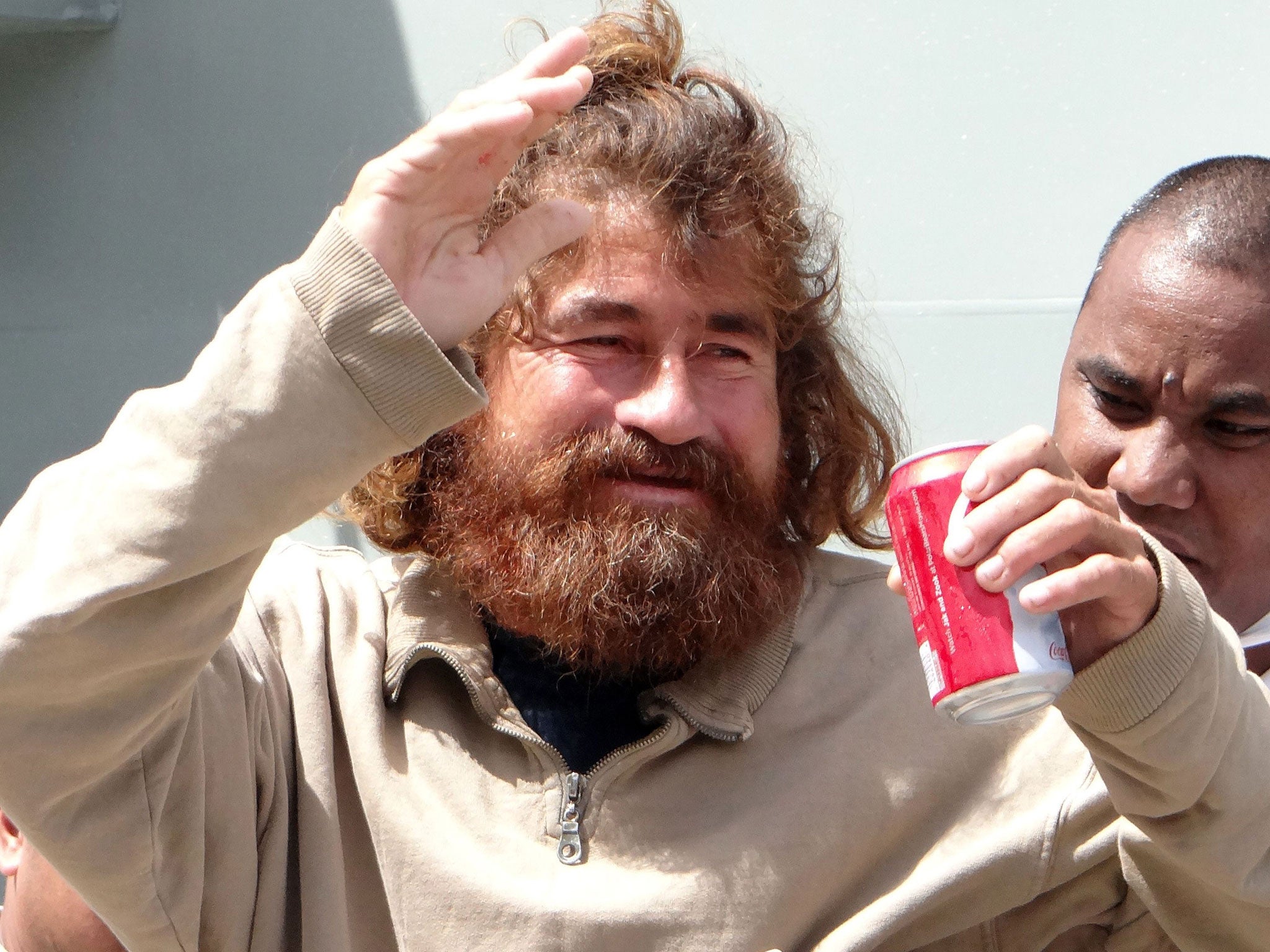Castaway Jose Salvador Albarengo arrives back in civilisation after 13 months adrift at sea
Mexican fisherman explains to interpreter how he and a young companion became lost in strong winds on 24 December 2012

A Mexican castaway who says he has been lost at sea for more than 13 months has been pictured for the first time on his arrival back in civilisation.
With a bushy beard and described as “looking better than one would expect”, the man set foot on land in Majuro, the capital of the Marshall Islands, after a 22-hour boat ride from the remote Ebon Atoll coral reef where he was found.
The US ambassador Thomas Armbruster, acting as an interpreter for the Marshall Islands authorities, said the man identified himself as a 37-year-old whose full name is Jose Salvador Albarengo.
“He said he is a shrimp and shark fisherman,” the ambassador told the AFP news agency after speaking with the castaway.
Mr Albarengo reportedly said he was on a shark-fishing expedition for the fishing company Camoronera Dela Costa in Tapachula, Mexico, when strong winds forced his 24-foot fibreglass boat off course.
The fisherman said he was accompanied at the time by a 15- to 18-year-old boy named Xiquel, who died just a few weeks after they got lost because he was unable to eat raw bird meat.
Eventually arriving at the southern-most cluster of the Marshall Islands territories 8,000 miles away, Mr Albarengo has previously told reporters he survived by eating turtles, birds and fish and drinking turtle blood and rainwater.
Ola Fjeldstad, a Norwegian anthropology student on Ebon Atoll, told the BBC how she and a group of researchers were the first to meet the castaway when they spotted his boat.
“And when we got there we first found his boat, which was... grown over with shells and other sea animals. It had a live baby bird, a dead turtle, some turtle shells and fish leftovers inside.
“He was in really bad shape in terms of strength and in terms of mental health.”
Marshall Islands immigration chief Damien Jacklick told AFP: “ With the help of the US ambassador, we were able to obtain information on his family members in El Salvador and the United States,” he told AFP. “We hope this information will help us track down his family.”
Watch: What's the real story behind the Mexican castaway?
Subscribe to Independent Premium to bookmark this article
Want to bookmark your favourite articles and stories to read or reference later? Start your Independent Premium subscription today.

Join our commenting forum
Join thought-provoking conversations, follow other Independent readers and see their replies